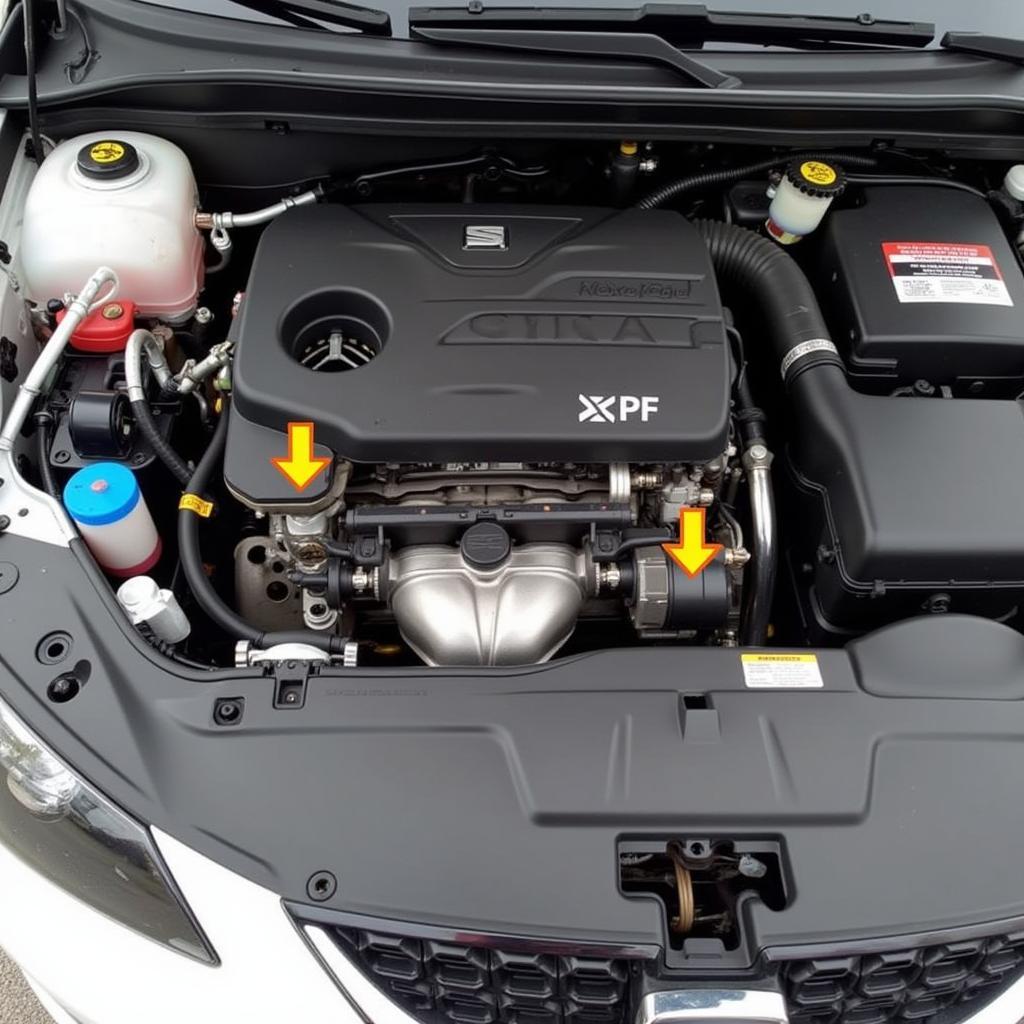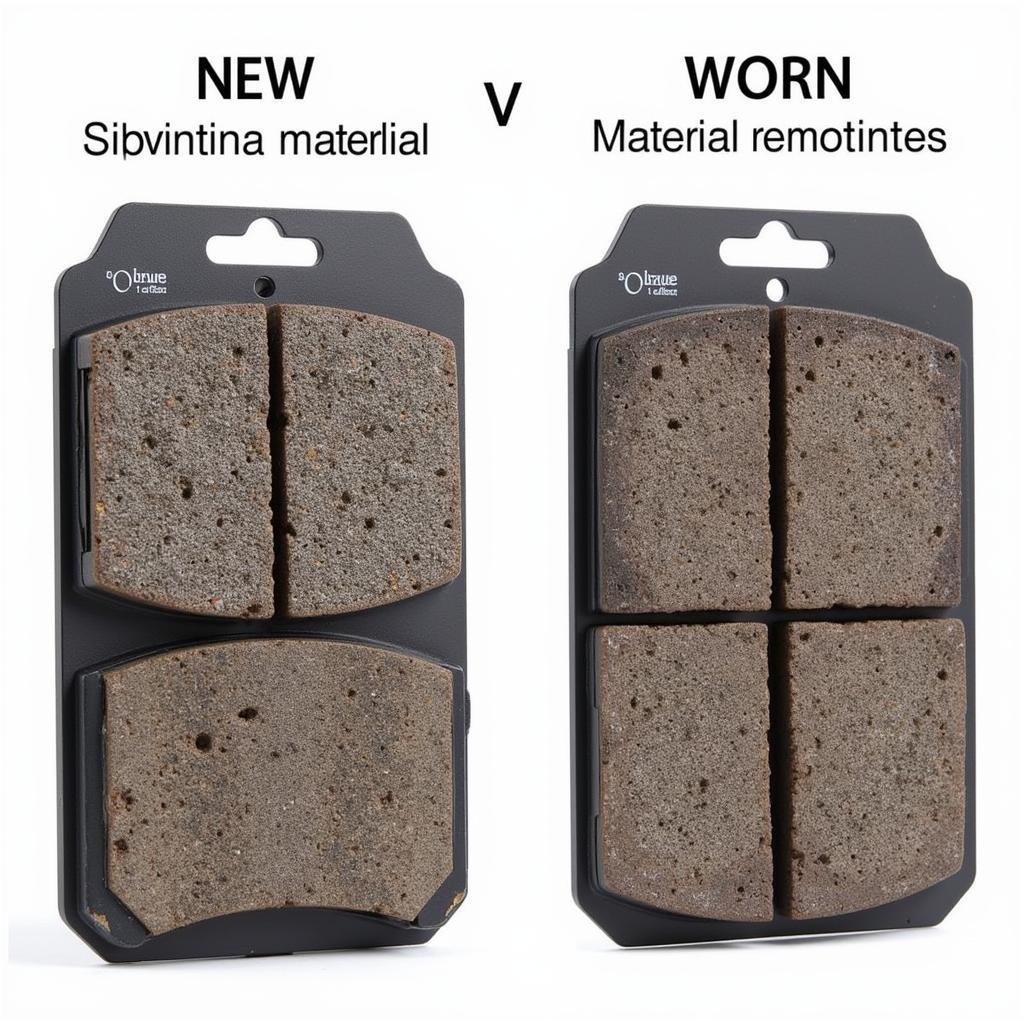The EPC warning light on your Seat Arona can be a source of anxiety. This guide provides a comprehensive overview of the EPC light, its potential causes, diagnostic procedures, and solutions, including remote software programming and installation. We’ll explore everything from simple fixes to more complex issues that might require professional help. You’ll learn how to identify the problem and the best course of action. After reading this, you’ll be equipped to handle this warning light like a pro.
The Electronic Power Control (EPC) light in your Seat Arona illuminates when the car’s engine control unit (ECU) detects a malfunction within the electronic power control system. This system manages several crucial components, including throttle control, fuel injection, and ignition. Understanding what triggers the EPC warning light is the first step toward resolving the issue. For more information on SEAT warning lights, visit our comprehensive guide on seat arona warning lights.
Understanding the EPC Warning Light in Your Seat Arona
The EPC light can be triggered by a wide range of problems, from minor glitches to more serious malfunctions. It’s crucial to diagnose the issue accurately to avoid further damage and unnecessary expenses. Ignoring the EPC warning light can lead to reduced performance, decreased fuel efficiency, and potentially more severe engine problems.
Common Causes of the EPC Warning Light
Several common issues can activate the EPC light in a Seat Arona. These include:
- Faulty Throttle Position Sensor: This sensor tells the ECU how far the accelerator pedal is pressed. A malfunction can disrupt the fuel-air mixture, triggering the EPC light.
- Malfunctioning Brake Light Switch: A faulty brake light switch can confuse the ECU, sometimes illuminating the EPC light.
- Issues with the Mass Airflow Sensor (MAF): The MAF sensor measures the air entering the engine. A faulty MAF sensor can lead to incorrect fuel-air mixture calculations, triggering the EPC light.
- Faulty Oxygen Sensors: Oxygen sensors monitor the exhaust gases to optimize the fuel-air mixture. A malfunctioning sensor can trigger the EPC light.
- Spark Plug or Ignition Coil Problems: Worn-out spark plugs or faulty ignition coils can lead to misfires and trigger the EPC light.
“A common misconception is that the EPC light always indicates a catastrophic engine failure,” says John Miller, a senior automotive diagnostic technician. “While it can signal serious issues, often it’s a simple sensor problem that can be fixed relatively easily.”
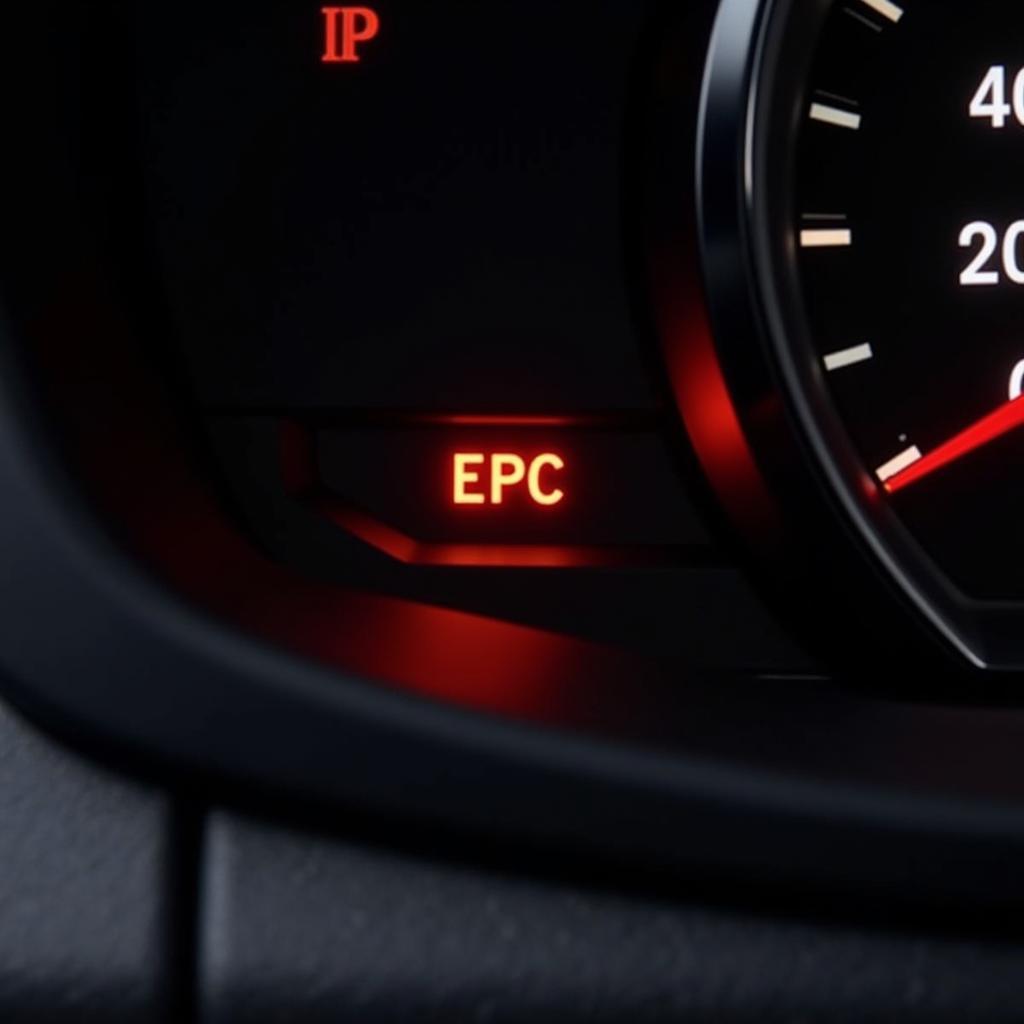 Seat Arona EPC Warning Light on Dashboard
Seat Arona EPC Warning Light on Dashboard
Diagnosing the EPC Warning Light
Diagnosing the EPC warning light involves using a diagnostic scanner to retrieve the fault codes stored in the ECU. These codes pinpoint the specific area where the malfunction is detected, helping to narrow down the possible causes.
Using a Diagnostic Scanner
A diagnostic scanner connects to the car’s OBD-II port and communicates with the ECU. This allows you to read and clear fault codes, monitor live data, and perform various diagnostic tests.
- Locate the OBD-II port, typically found under the dashboard on the driver’s side.
- Connect the diagnostic scanner to the port.
- Turn the ignition on, but do not start the engine.
- Follow the scanner’s instructions to read the fault codes.
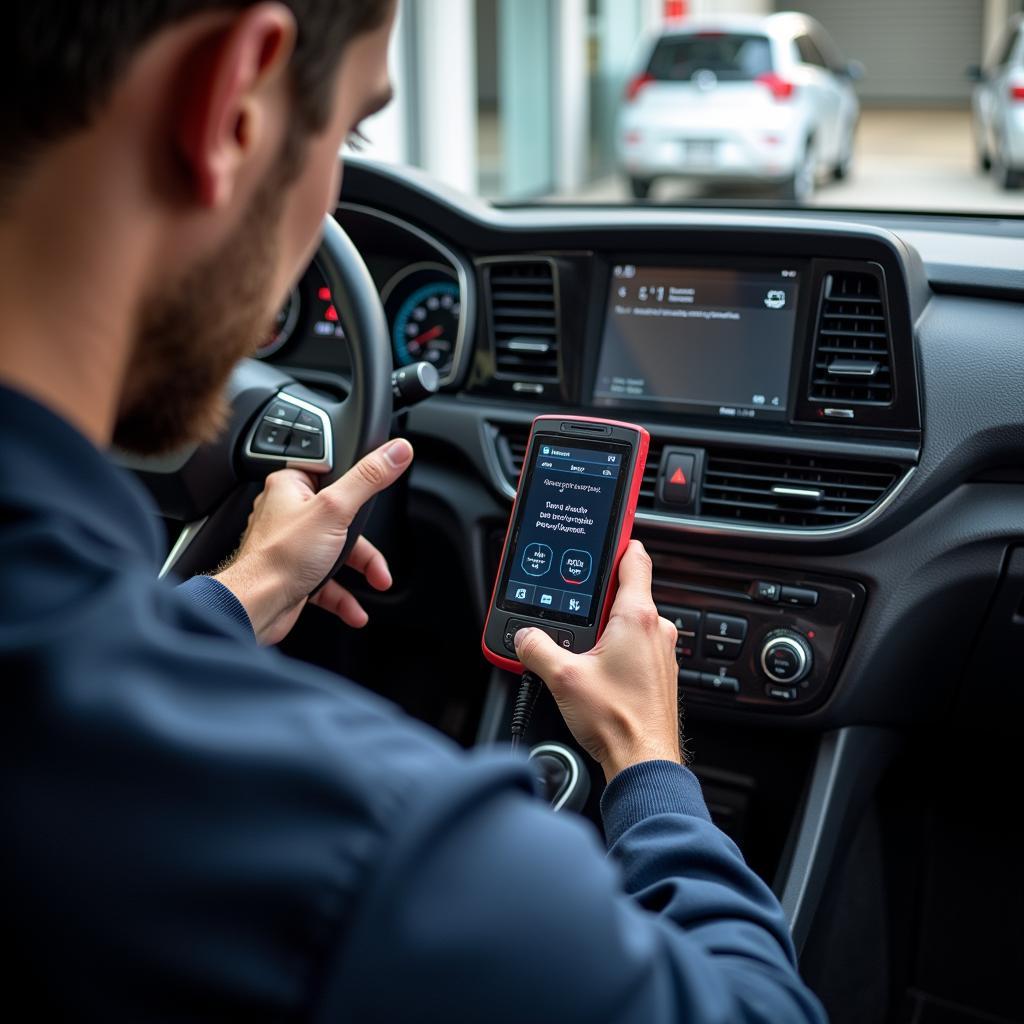 Mechanic Diagnosing EPC Light with Scanner
Mechanic Diagnosing EPC Light with Scanner
For more information about the EPC light in SEAT vehicles, please refer to our guide on epc warning light seat.
Remote Software Programming and Installation
In some cases, the EPC warning light might be caused by software glitches within the ECU. Remote software programming and installation can address these issues without needing a physical visit to a workshop. This involves remotely accessing the car’s ECU and updating or reinstalling the necessary software. “Remote diagnostics and programming have revolutionized the way we address certain car problems,” explains Sarah Chen, a leading expert in automotive software. “It allows for quick and efficient solutions, often saving the car owner time and money.”
Resolving the EPC Warning Light Issue
Once the problem is diagnosed, you can take the necessary steps to resolve it. This could involve replacing faulty sensors, repairing wiring issues, or updating the ECU software. Ignoring the EPC light can exacerbate the problem and potentially lead to more expensive repairs. Check out more resources on SEAT dashboard warning lights at seat dashboard warning lights.
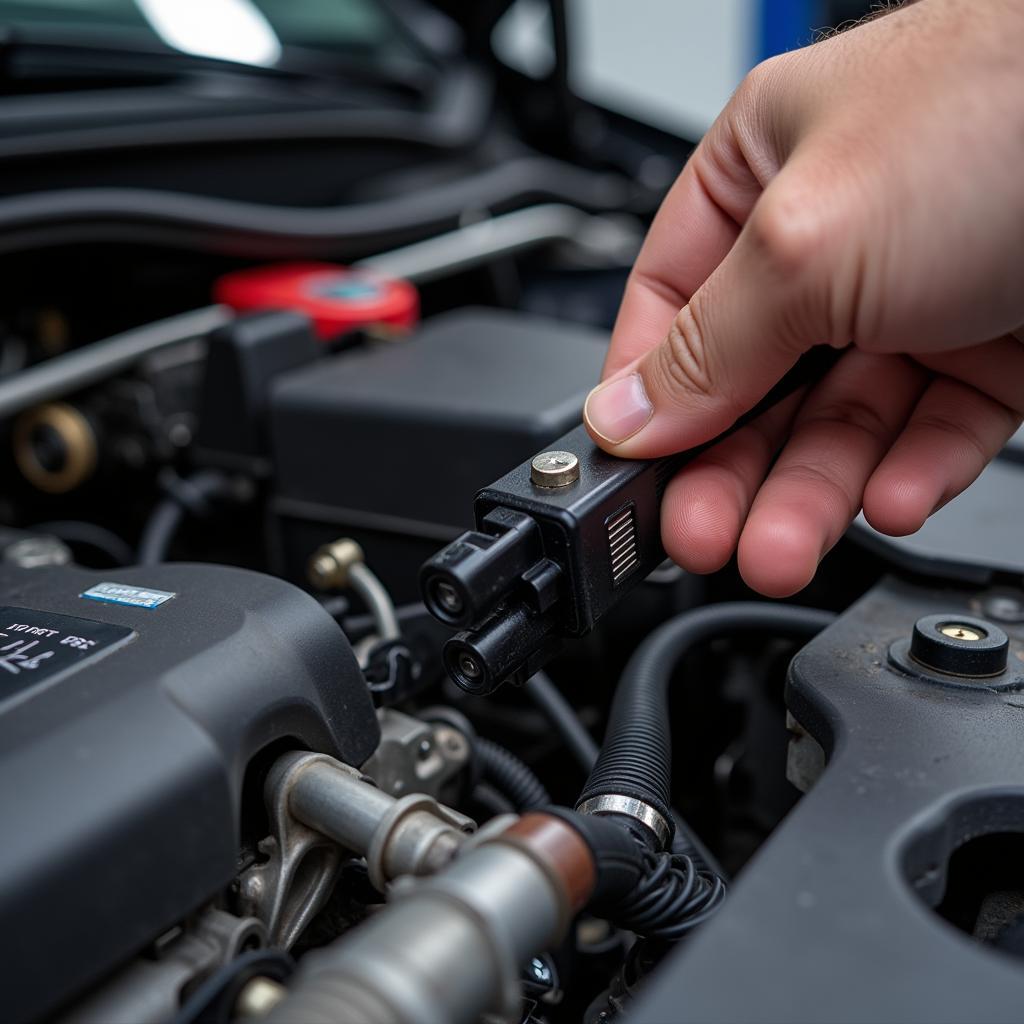 Car Mechanic Replacing Faulty Sensor
Car Mechanic Replacing Faulty Sensor
Conclusion
The EPC warning light on your Seat Arona should not be ignored. By understanding its causes, diagnostic procedures, and potential solutions, including remote software updates, you can take proactive steps to address the issue and keep your car running smoothly. Remember, accurate diagnosis is key to efficient and cost-effective repairs.
FAQ
- What does the EPC light mean? The EPC light indicates a problem with the Electronic Power Control system.
- Can I drive with the EPC light on? While you might be able to drive, it’s not recommended. It could worsen the problem.
- How do I diagnose the EPC light? Use a diagnostic scanner to read fault codes from the car’s ECU.
- What are common causes of the EPC light? Faulty sensors, such as the throttle position sensor, are common culprits.
- Can the EPC light be reset? Yes, a diagnostic scanner can clear the fault codes and reset the light.
- Is remote software programming an option? Yes, in some cases, software updates can resolve the issue remotely.
- What if the EPC light comes back on after repair? Further diagnostics might be needed to pinpoint the underlying cause.

